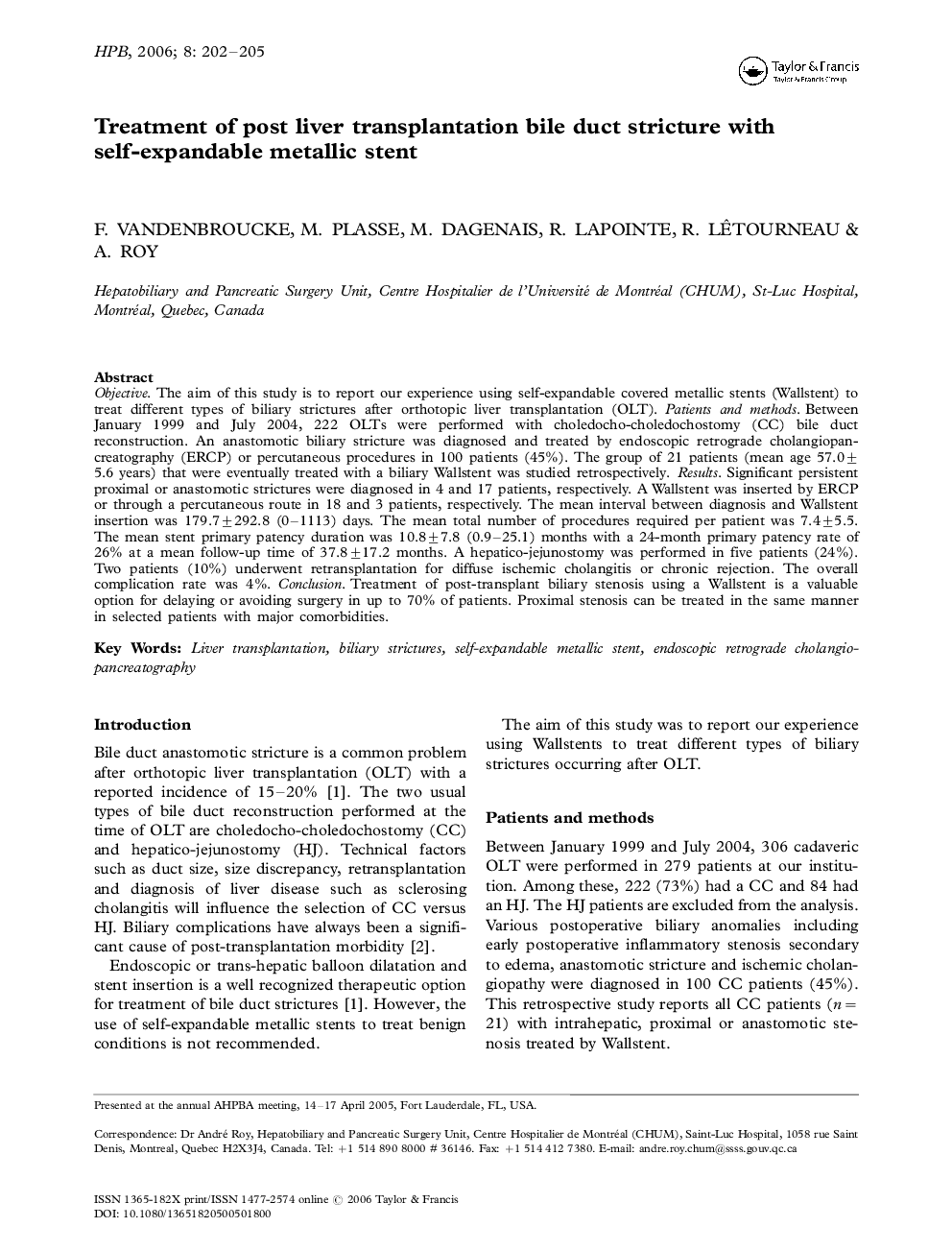| Article ID | Journal | Published Year | Pages | File Type |
|---|---|---|---|---|
| 3270375 | HPB | 2006 | 4 Pages |
Abstract
Objective. The aim of this study is to report our experience using self-expandable covered metallic stents (Wallstent) to treat different types of biliary strictures after orthotopic liver transplantation (OLT). Patients and methods. Between January 1999 and July 2004, 222 OLTs were performed with choledocho-choledochostomy (CC) bile duct reconstruction. An anastomotic biliary stricture was diagnosed and treated by endoscopic retrograde cholangiopancreatography (ERCP) or percutaneous procedures in 100 patients (45%). The group of 21 patients (mean age 57.0±5.6 years) that were eventually treated with a biliary Wallstent was studied retrospectively. Results. Significant persistent proximal or anastomotic strictures were diagnosed in 4 and 17 patients, respectively. A Wallstent was inserted by ERCP or through a percutaneous route in 18 and 3 patients, respectively. The mean interval between diagnosis and Wallstent insertion was 179.7±292.8 (0-1113) days. The mean total number of procedures required per patient was 7.4±5.5. The mean stent primary patency duration was 10.8±7.8 (0.9-25.1) months with a 24-month primary patency rate of 26% at a mean follow-up time of 37.8±17.2 months. A hepatico-jejunostomy was performed in five patients (24%). Two patients (10%) underwent retransplantation for diffuse ischemic cholangitis or chronic rejection. The overall complication rate was 4%. Conclusion. Treatment of post-transplant biliary stenosis using a Wallstent is a valuable option for delaying or avoiding surgery in up to 70% of patients. Proximal stenosis can be treated in the same manner in selected patients with major comorbidities.
Keywords
Related Topics
Health Sciences
Medicine and Dentistry
Endocrinology, Diabetes and Metabolism
Authors
F. Vandenbroucke, M. Plasse, M. Dagenais, R. Lapointe, R. Lêtourneau, A. Roy,
